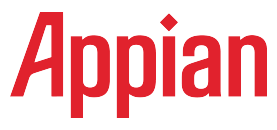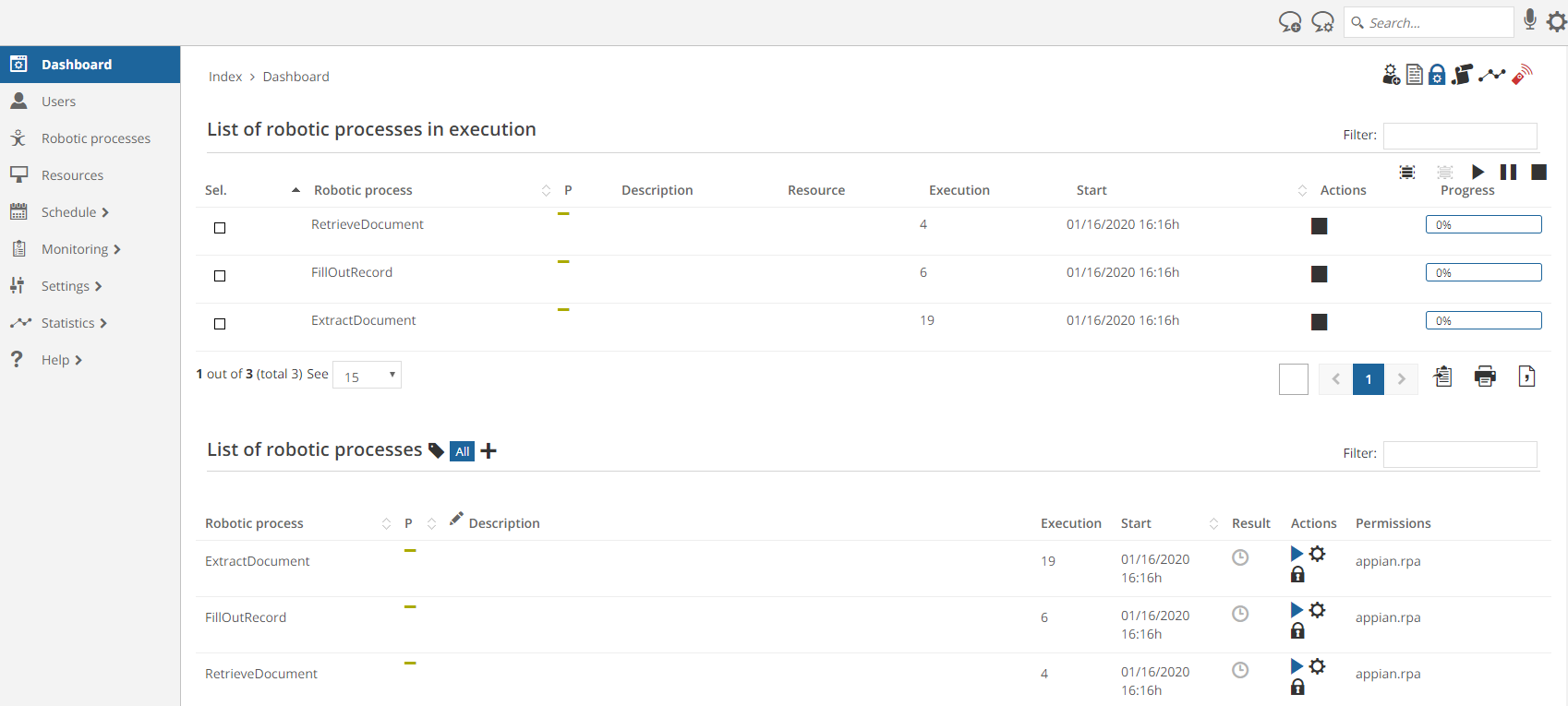Appian Brings RPA To Its Low-Code Platform; Sets Path for End-to-End Intelligent Automation
Appian is bringing Robotic Process Automation to its low-code process automation platform. The company will integrate RPA with key features to provide end-to-end intelligent automation. IDN talks with Appian vice president Malcolm Ross.
by Vance McCarthy
Tags: AI, Appian, automation, bots, BPM, integration, low-code, RPA, workflow,

vice president

"Appian’s approach enables automation that takes into account the three main agents of modern work — humans, bots, and AI."
 Modern Application Development for Digital Business Success
Modern Application Development for Digital Business SuccessAppian is adding RPA to its digital process automation platform to provide enterprises a "unified automation stack" that can support a wide range of end-to-end processes.
Appian RPA sports several vital features to speed and simplify development, as well as help with end-to-end management, including:
- Intelligent image recognition of objects on a screen to reduce errors in bot actions.
- Capability to deploy bots on a scheduled basis for common back-end processes. These can also be invoked on-demand by business users as needed for customer-facing interactions.
- Features to increase productivity of bots via "human in the loop" optimization. This approach lets users maximize automation of daily tasks via bots while keeping people engaged as needed, especially where exceptions are required (such as with straight-through-processing tasks).
- Detailed RPA audit trails show screenshots of robotic actions for complete visibility, control, and reporting.
Appian RPA can also leverage underlying governance features now part of the Appian platform. This lets users centrally manage, monitor, and deploy cloud-native software robots across the organization.
Beyond these core capabilities, the services can be delivered with the speed of low-code – and extended with several extensible AI-powered services.
Appian RPA Builds on Vision for End-to-End Intelligent Automation
Appian RPA augments Appian's low-code platform to deliver intelligent automation, which offers end-to-end integration for workflow, case management, process automation, RPA, BPM, business rules and case management.
"Business automation value comes from the effective workflow orchestration of today's modern workforce, including people, software robots (bots), and AI." The Appian automation stack aims to unify people, bots, and AI across business processes and provide centralized management of all enterprise automation technologies on a single platform, the company added.
For companies looking for better outcomes from RPA, Appian technologies and best practices also aim to support the development of an Automation Center of Excellence by customers.
Core to this capability, Appian collects automation requests and can prioritize them from across the enterprise. Further, Appian can manage and track all activities - from request to completion. This granular control and access to data supports impact and value analyses for RPA (and other automation) in production.
Appian's approach to RPA is based on what the company calls an "intelligent automation" platform approach, according to Malcolm Ross, Appian's vice president of product strategy.
For Appian, intelligent automation unifies RPA with case management, low-code development, automation and orchestration. "This approach enables automation that takes into account the three main agents of modern work — humans, bots, and AI," Ross told IDN.
Beyond these capabilities, Ross also noted that RPA plus integration can deliver higher ROI than either solution can alone, he added. "You get the most value from an intelligent automation approach when you can use a single platform that can manage end-to-end processes and integrations – across legacy, hybrid and cloud," he said.
This is why Appian's platform aims to deliver what Ross called "a master orchestrator," which breaks through some of the existing silos often associated with RPA. "Appian can provide companies both central visibility and control of multiple platform capabilities," he said.
When RPA + Integration Spells the End to RPA Silos
Ross also explained to IDN why this vision of a more integrated RPA is so essential.
"We're at a market point where many enterprises now have started to understand RPA," Ross told IDN. "And we're seeing early [RPA] adopters evolving past limitations of a siloed approach and looking for a grander automation scheme" to meet their enterprise and business needs.
Ross shared a customer example of how one adopter is using Appian's integrated RPA-automation platform to achieve end-to-end value from improved processes and deeper intelligent automation.
A publisher is using intelligent bots to manage the flow of financial news to clients.
Before using Appian, the company required some 4,000 workers to manually read thousands of company 10K filings before creating summaries of those activities, Ross said.
With Appian RPA, the company can now deploy bots and AI to accomplish many of these steps – read the filing, scrape the critical information, compose a summary and put that into a controllable database format.
"Their goal is process efficiency, so they want to get the news out ASAP," Ross told IDN. "Previously, they had people who had read all these articles and write news about them. Now they're employing robotic process automation, natural language and artificial intelligence to automatically read and then compose news articles."
This workflow example – which combines RPA, integration and AI - also shows the power of using orchestration for delivering an efficient end-to-end process flow, he added.
"This is a model for business process and it's a model for intelligent automation because BPM is the master orchestrator. It ties together RPA with artificial intelligence, with integration services and humans all into one cohesive process," Ross said. Going through the steps, (or sequential tasks), it runs like this
- Trigger the RPA bots to scrape the news.
- Trigger artificial intelligence to read the news.
- Trigger another AI routine to compile a news article.
- Trigger a human to review the news article before it goes to market.
- And finally, trigger a public publication integration to publish it to market.
While this type of RPA example reveals excellent value, there is a next-level layer of value that comes when governance can be added to the RPA + integration + AI recipe, Ross said.
He noted that CIOs are concerned about robot security and governance, and that has limited the growth of RPA for larger-scale use cases, Ross said.
To address this opportunity, Appian is also enabling a "governed robotic workforce," Ross said. These features let organizations manage, monitor and schedule RPA tasks and bots. Further, because Appian offers an integrated and centralized approach, if any robots create errors or exceptions, humans can easily step in quickly to make corrections, if needed, he added.
One Appian partner described the latest offering this way:
"Automation is not about any single technology; it's about how technologies work together. Achieving value at-scale requires a smart strategy for how to combine RPA, AI, and workflow, and seamless execution of that strategy. Appian has the full package," said Jorge Arahuetes, Partner, Business Process Management, Deloitte Spain, in a statement.
Other Global Appian strategic partners include KPMG, Cognizant, Accenture Federal and Doble O Consulting, are trained and certified on Appian RPA within their Appian practices.
Appian RPA pricing for unlimited bots starts at $5k per month.
Appian RPA aims for a GA release in late March and will be part of the next release of the Appian Low-code Automation Platform.
Release of Appian RPA follows news earlier this year that Appian acquired Novayre Solutions SL, developer of the Jidoka RPA platform. Jidoka is a highly-rated RPA solution in Gartner Peer Insights. A recent Forrester report predicts the RPA market is expected to reach $12 billion by 2023.
In addition, this spring Appian also launched a new Workforce Safety and Readiness app. It sports features to help ensure employee safety during COVID-19 and other crises while working at home, as well as support return-to-work after workplace disruptions.
In specific, the app brings organizations intelligent processes and automation to ensure they comply with government regulations and company policies. It also helps users prioritize workforce health and workplace safety.
In announcing the new app, Appian said
Human Resources and Crisis Management teams, already strained by the COVID-19 pandemic, must now plan how to return the workforce safely to the workplace. These transitions will be complex. To ensure people are productive and safe in the workplace, organizations will need to consider individual employee health and risk screenings, whether an employee’s role can be efficiently done remotely, corporate policies, and a variety of national and regional government regulations.
Appian’s new Workforce Safety and Readiness includes:
A unified command center. The app establishes a central command center to safeguard the health and safety of employees. Employers can see and manage the health and work status of all employees in real-time.
Fast, easy workforce screening. Employees use a simple web or mobile interface to submit and update personal health and risk data required by local law and by corporate policy.
Intelligent return-to-work certification. Organizations define internal policy rules regarding return-to-work authorization, leveraging an expanding library of pre-built rules based on health organization guidelines and government regulations. These rules are then applied to employee health and risk submission data to automatically authorize an employee to return-to-work.
Support for phased return-to-work. The solution enables automation of a phased or rotating approach to workforce return. Return certifications can be delivered to employees based on geography, team, role, personal health risk, workspace capacity, or other factors.
Rapid issue resolution. Exceptions, appeals, or employee concerns can be quickly managed by HR using built-in case management capabilities.
Privacy and security. The application runs on the Appian HIPAA-compliant cloud and helps protect sensitive employee health data.
Related:
- InfluxData's Latest Updates Optimize Time Series Data for Better Performance, Scale and Management
- Actian Zen 16.0 Update Simplifies Delivery and Boosts Performance of Edge, IoT Apps
- Virtana Infrastructure Performance Management Adds AI-driven Capacity Planning
- e2open’s Supply Chain SaaS Updates Help Firms Reduce Operational Risks with Deeper Visibility
- Report: Endor Labs Identifies 2023 Operational, Security Risks To Open Source
All rights reserved © 2025 Enterprise Integration News, Inc.



